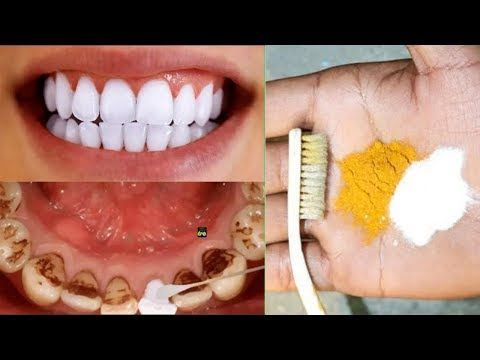
For decades, we’ve been taught a simple formula for dental health: brush twice a day, floss regularly, avoid too much candy, and visit the dentist every six months. It’s a routine as familiar as morning coffee, a seemingly foolproof plan to maintain a healthy smile well into our golden years. But what if this formula is missing a critical piece? What if one of the most common, seemingly innocent foods in the American diet—a staple found in nearly every pantry and praised for its health benefits—is secretly working against us, eroding our teeth from the inside out?
This isn’t a story about sugar-filled soda or sticky candies. Those are the obvious villains, and we know to avoid them. This is a story about a silent saboteur, a food so universally consumed that most of us never think to question its effects. For millions of Americans over 50, this dietary staple could be the hidden cause of increased tooth sensitivity, crumbling molars, and unexplained cavities, despite a lifetime of diligent oral hygiene.
The culprit isn’t candy. It isn’t soda. It’s dried fruit.
Yes, those innocent-looking raisins in your oatmeal, the apricots in your trail mix, the dates in your energy bars, and the cranberries in your salad. For years, we’ve been told these are healthy snacks—natural, nutrient-dense alternatives to processed sweets. But from a dental perspective, they might be one of the worst things we can put in our mouths.
The problem isn’t the fruit itself; it’s what happens to it during the drying process and how our bodies interact with it. Here’s how this “healthy” snack becomes a dental nightmare:
1. The Sugar Concentration Bomb
When fruit is dried, all the water is removed. What remains is a highly concentrated packet of sugar and acid. Think about it: it takes about four cups of fresh grapes to make one cup of raisins. When you eat that cup of raisins, you’re not just eating the sugar of one handful of grapes; you’re consuming the sugar of four entire cups, all stuck to the surface of your teeth in a gooey, adhesive layer. This sugar becomes a feast for the harmful bacteria in your mouth, which then produce acid as a byproduct. This acid attacks tooth enamel, leading to decay.
2. The “Candy” Texture
Dried fruit has a sticky, chewy texture that clings to every groove and crevice in your molars, much like caramel or gummy candy. This allows the concentrated sugars and acids to remain in contact with your enamel for extended periods, especially if you’re snacking throughout the day. Unlike a piece of fresh fruit that’s quickly washed away by saliva, dried fruit leaves behind a residue that can fuel bacteria for hours.
3. The Acidic Double Whammy
Many dried fruits, like apricots, cranberries, and pineapples, are highly acidic. This acidity directly softens and erodes tooth enamel, the protective outer layer of your teeth. Once enamel is worn away, it doesn’t grow back. This leads to sensitive teeth, discoloration, and an increased risk of cavities. For older adults, whose gums may have receded slightly, exposing the softer root surfaces, this acid attack is even more damaging.
The Deeper Danger for the 50+ Crowd
As we age, our dental vulnerabilities increase. Years of wear and tear have already taken a toll on our enamel. Receding gums expose the softer, less-protected cementum of the tooth roots, which is far more susceptible to decay and erosion. Many medications commonly taken by older adults, such as those for blood pressure or depression, can cause dry mouth (xerostomia). Saliva is our mouth’s natural defense system—it neutralizes acids and washes away food particles. Without it, the damaging effects of dried fruit are magnified tenfold.
You might be doing everything right: brushing with an electric toothbrush, flossing meticulously, using fluoride rinse. But if your daily snack is a handful of trail mix or an “energy ball” packed with dates and raisins, you might be unknowingly undoing all that good work. The slow, constant drip of acid and sugar is like leaving a piece of sandpaper on your teeth all day.
But It’s Not All Doom and Gloom—Here’s How to Fight Back
The solution isn’t to never eat dried fruit again. It’s about being strategic and mitigating the damage.
- Pair It with a Meal: Never eat dried fruit alone as a snack. Always consume it as part of a larger meal. The other foods will help neutralize acids and stimulate saliva production, which helps rinse away the sugars and stickiness.
- The Swish-and-Swallow Water Trick: Keep a glass of water handy. Take a sip of water immediately after eating dried fruit, swish it around your mouth vigorously, and swallow. This simple act is remarkably effective at dislodging sticky particles and diluting acids.
- Choose Wisely: Some dried fruits are worse than others. Avoid candied fruits (which have added sugar) and opt for less sticky varieties like apple chips. Ultimately, fresh fruit is always the superior choice.
- Timing is Everything: Don’t graze on dried fruit throughout the day. If you’re going to eat it, do it in one sitting. This limits the amount of time your teeth are under acid attack.
- Wait Before You Brush: If you’ve eaten something acidic, your enamel is temporarily softened. Brushing immediately can actually wear it away faster. Wait at least 30 minutes after eating before brushing your teeth.
The lesson here is one of awareness. In our quest for healthier choices, we must look beyond the marketing labels. “All-natural,” “organic,” and “fat-free” don’t automatically mean “tooth-friendly.” The story of dried fruit is a powerful reminder that true health requires a holistic view, understanding how our choices affect every part of our body—even the parts we can’t easily see.
So the next time you reach for that “healthy” handful of raisins, remember: the secret to preserving your smile for years to come might just be choosing an apple instead. Your teeth—and your dentist—will thank you.